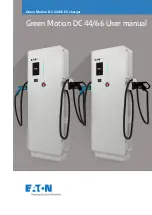
3. Outer Tube
4. Hydraulic Chamber
5. Piston and Valve
6. Liquid Storage Space
7. Inner Cylinder Bottom Valve
It controls the unwanted spring movement through a process
known as damping. Shock absorber converts the suspension
kinetic energy to heat dissipated by the hydraulic fluid to slow
and weaken the vibration movement. Shock absorber upper
bearing is connected to the frame (ie. Sprung Load), lower
bearing is connected to the axle (ie. non-Sprung Load). In the
double-cylinder design, one of the most common types of
shock absorber is that the upper bearing is connected to the
piston rod, piston rod is connected to the piston and piston is
in the cylinder filled with hydraulic fluid. Inner cylinder is known
as the pressure cylinder, outer cylinder is known as the
reservoir cylinder. Reservoir cylinder stores the extra hydraulic
fluid. When the wheels encounter bumps along the road and
the spring is compressed or stretched, the spring energy
passes through the bearing to the shock absorber, and passes
down through the piston rod to the piston. There are holes on
the piston. When the piston moves up and down in the pressure
cylinder, hydraulic fluid may leak through these holes. Because
these holes are very small, so even under a lot of pressure only
a small amount hydraulic fluid can leak through. This slows
down the velocity of the piston, so it slows down the spring
movement. Shock Absorber's work consists of two cycles -
compression cycle and extension cycle. Compression cycle is
when the piston moves downward to compress the hydraulic
fluid beneath it; extension cycle is when the piston moves
upward to compress the hydraulic fluid on the top. For a typical
vehicle, the extension cycle resistance is greater than its
compression cycle. Moreover, please note that compression
cycle control is related to the non-sprung load movement, while
the extension cycle control is related to heavier Sprung Load
movement. All modern shock absorbers come with speed-
sensing capabilities - the faster the suspension speed, the
greater the resistance shock absorber provides. This makes
the shock absorber can be adjusted according to road
conditions and controls the vehicle to eliminate unwanted
movements, including bounce, roll, brake dive and acceleration
squat and so on.
3. Stabilizer Bar:
It is used in conjunction with the shock absorber to provide
additional stability for the driving vehicle. Stabilizer is a metal
bar across the axle, effectively connecting the suspension on
both sides together. When a wheel moves up and down on the
suspension, stabilizer bar will pass the movement to the other
wheel. This can make driving more stable and reduce the
vehicle inclination. In particular, it is capable to compensate the
vehicle rollover tendency when the vehicle is turning.
4-8
Front Suspension
Suspension System
EC718/EC718RV EC715/EC715RV 10/2009
Summary of Contents for EC715 2009
Page 4: ......
Page 330: ...Next Step 10 End 2 248 Fuel System JL4G18 D Engine EC718 EC718RV EC715 EC715RV 10 2009 ...
Page 1164: ......
Page 2008: ......
















































